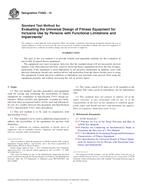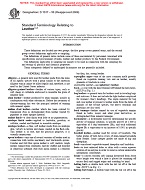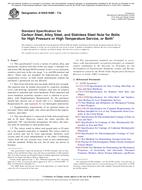1.1 Purpose and Application – This guide covers the equipment, field procedures, and interpretation methods for the assessment of subsurface conditions using the seismic refraction method. Seismic refraction measurements as described in this guide are applicable in mapping subsurface conditions for various uses including geologic, geotechnical, hydrologic, environmental (1), mineral exploration, petroleum exploration, and archaeological investigations. The seismic refraction method is used to map geologic conditions including depth to bedrock, or to water table, stratigraphy, lithology, structure, and fractures or all of these. The calculated seismic wave velocity is related to mechanical material properties. Therefore, characterization of the material (type of rock, degree of weathering, and rippability) is made on the basis of seismic velocity and other geologic information.
1.1.1 The geotechnical industry uses English or SI units.
1.2 Limitations:
1.2.1 This guide provides an overview of the seismic refraction method using compressional (P) waves. It does not address the details of the seismic refraction theory, field procedures, or interpretation of the data. Numerous references are included for that purpose and are considered an essential part of this guide. It is recommended that the user of the seismic refraction method be familiar with the relevant material in this guide and the references cited in the text and with appropriate ASTM standards cited in 2.1.
1.2.2 This guide is limited to the commonly used approach to seismic refraction measurements made on land. The seismic refraction method can be adapted for a number of special uses, on land, within a borehole and on water. However, a discussion of these other adaptations of seismic refraction measurements is not included in this guide.
1.2.3 There are certain cases in which shear waves need to be measured to satisfy project requirements. The measurement of seismic shear waves is a subset of seismic refraction. This guide is not intended to include this topic and focuses only on P wave measurements.
1.2.4 The approaches suggested in this guide for the seismic refraction method are commonly used, widely accepted, and proven; however, other approaches or modifications to the seismic refraction method that are technically sound may be substituted.
1.2.5 Technical limitations and interferences of the seismic refraction method are discussed in D420, D653, D2845, D4428/D4428M, D5088, D5730, D5753, D6235, and D6429.
1.3 Precautions:
1.3.1 It is the responsibility of the user of this guide to follow any precautions within the equipment manufacturer’s recommendations, establish appropriate health and safety practices, and consider the safety and regulatory implications when explosives are used.
1.3.2 If the method is applied at sites with hazardous materials, operations, or equipment, it is the responsibility of the user of this guide to establish appropriate safety and health practices and determine the applicability of any regulations prior to use.
1.4 This standard does not purport to address all of the safety concerns, if any, associated with its use. It is the responsibility of the user of this standard to establish appropriate safety and health practices and determine the applicability of regulatory limitations prior to use.
1.5 This guide offers an organized collection of information or a series of options and does not recommend a specific course of action. This document cannot replace education or experience and should be used in conjunction with professional judgment. Not all aspects of this guide may be applicable in all circumstances. This ASTM standard is not intended to represent or replace the standard of care by which the adequacy of a given professional service must be judged, nor should this document be applied without consideration of a project’s many unique aspects. The word “Standard“ in the title of this guide means only that the document has been approved through the ASTM consensus process.
Product Details
- Published:
- 07/01/2011
- Number of Pages:
- 14
- File Size:
- 1 file , 340 KB


